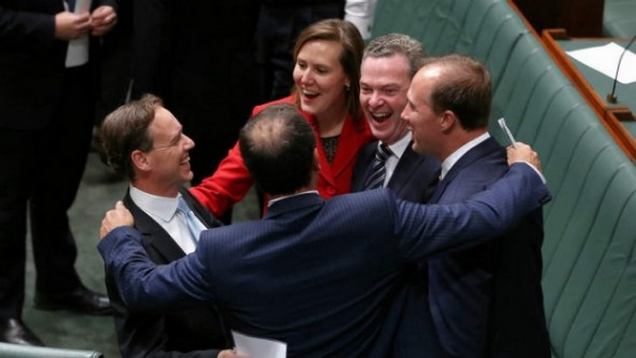The latest Climate Change Authority report highlights the pressing challenge of global warming. A strong leader would recognise this and bring all forces to bear on it — Turnbull's inaction, is beyond foolish, writes Peter Boyer.
 |
| (Image via worldwarming.info) |
But the report is compromised from the start by the implacably opposed forces it wants to reconcile: a scientific establishment increasingly anxious about climate change and a political establishment determined to treat it as a second-order issue.
The CCA under former Reserve Bank governor Bernie Fraser did what its legislation demanded: give evidence-based advice independent of government — but it's had to endure a hostile Coalition Government determined to eradicate all trace of Julia Gillard's carbon price scheme.
After a defiant Senate blocked its bill to abolish the CCA, Tony Abbott's Government sought to marginalise it by keeping it at arm's length and ignoring its advice.
The Coalition got the scalp it wanted last year with the resignation of Fraser, who found he couldn't do the bidding of the government while abiding by the CCA's charter.
The new-look board under ecologist, company director and administrator Wendy Craik has kept a distance between itself and government, noting that Australia's emissions will have to improve markedly in the near future. But it's clearly more politically sensitive than its predecessor.
 |
| IMAGE link to story |
Instead it proposes a "policy toolkit" building on current policies, with new measures aimed, Craik says, at
' ... a long term durable solution to Australia's climate challenge.' (p88)This toolkit, she said, would 'take account of Australia's climate policy history', be suited to the needs of individual sectors, and be capable of being
' ... scaled up in the future to meet the emission reduction challenges in the Paris Agreement.' (p9)That sounds a lot like carbon pricing.
Aware of Coalition paranoia about anything that looks like a tax, the CCA report proposes an 'emissions intensity scheme', using a market mechanism to control emissions from electricity generation, along with an 'enhanced safeguard mechanism' (p66) to control industrial and resource emissions.
Wendy Craik and her board are stuck between a rock – a cabal of conservative politicians zealously blocking any effective climate policy – and a hard place, what Australia has to do to meet its international commitments. They deserve some sympathy.
But only some. As two disaffected CCA members pointed out last week, the CCA's charter clearly dictates that it must focus on the implications of those commitments.
 |
| IMAGE link to story |
Karoly and Hamilton point out that if we stick to the Turnbull Government's current target, by 2030 we'll have used up over 90 per cent of that budget of 10.1 billion tonnes. The trajectory of emissions would then have to drop precipitously to reach net zero within five years — an impossible task.
If 2C is looking impossible for us, where does that leave Paris's more ambitious "aspirational" target? Swedish research published last week calculates that Australia has just six more years at current emission rates before it has entirely used up its budget to hold warming below 1.5C.
When we first learned of global warming a quarter-century ago, crunch time was decades away and postponing strong action could be presented as a plausible option. Now, with time available counted not in decades but a handful of years, it's beyond foolish.
A confident leader with competent deputies in a fully functional political system will acknowledge an unprecedented and pressing challenge and bring all forces to bear on it. Lesser ones will maintain the party divide, divert attention and pretend they have control. Sounds sadly familiar.
People are optimistic by nature – we have to be or we wouldn't get up in the morning – and I'm painfully aware that repeated warnings come at the cost of diminished impact. We all have to get on with our lives. But like Karoly and Hamilton, I don't know what else to do.
 |
| IMAGE link to story |








